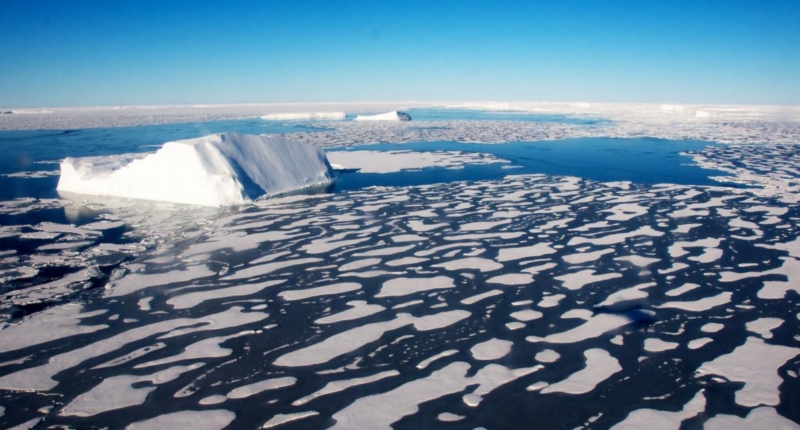Arctic sea ice has undergone significant changes since the summers of 2005 and 2007. A recent study by Norwegian scientists reveals that Arctic sea ice is now younger, thinner, and uniform. The sea ice regime in the Arctic changed irreversibly in 2007, representing a stepwise shift to a new normal. The study suggests that Arctic sea ice has likely been irrevocably lost. The reduction of sea ice extent between 2005 and 2007 was due to increased ocean heat in ice formation areas in Siberia, resulting in weaker ice. The amount of the thickest ice above 4 meters reduced by 52 percent during the summers of 2005 and 2007. The ice’s residence time in the Arctic Basin was reduced due to increased outflow through the Fram Strait. This younger ice leaves the Arctic too quickly, which has implications for the Arctic ecosystem and the Earth’s climate. The findings of the study have important implications for the future of the Arctic and the planet as a whole.
Arctic Sea Ice Likely Irrevocably Lost Norwegian Scientists Conclude.
A recent study published in the journal Nature by researchers at the Norwegian Polar Institute in Tromsø has revealed that Arctic sea ice has undergone significant changes in the past two decades, particularly during the summers of 2005 and 2007. The study suggests that Arctic sea ice has likely been irrevocably lost.
The researchers discovered that the reduction of sea ice extent between 2005 and 2007 was due to increased ocean heat in ice formation areas in Siberia, resulting in weaker ice. The sea ice has not recovered since then and remains only around half as thick as it was before 2005. It has also become much younger, with half the thick multi-year ice being lost during that period.
The study concludes that the sea ice regime in the Arctic changed irreversibly in 2007. The sea ice entered a new state following the record-melt in 2007, resulting in a “stepwise shift” to a new normal. Prior to the melt event, the ice was thicker and deformed. Following the summer of 2007, it transitioned to thinner and uniform ice cover. The change of the thickness distribution was not a gradual process but a distinct shift that occurred around 2007.
The researchers found that the amount of the thickest ice above 4 meters reduced by 52 percent during the summers of 2005 and 2007. The ice’s residence time in the Arctic Basin was reduced due to increased outflow through the Fram Strait.
Sea ice coverage between 1-1.5m thick and less than three years old has become the norm, which is a significant change from the pre-2007 era, where ice between 3-4 meters thick and more than 4 years old dominated the Arctic Ocean.
This younger ice leaves the Arctic too quickly, which has implications for the Arctic ecosystem and the Earth’s climate. The loss of sea ice also contributes to rising sea levels and has significant implications for the global community.
The findings of the study have important implications for the future of the Arctic and the planet as a whole. The researchers urge policymakers to take action to mitigate the effects of climate change and protect the Arctic ecosystem.
Don’t miss interesting posts on Famousbio
